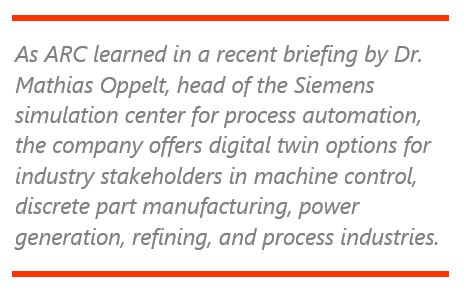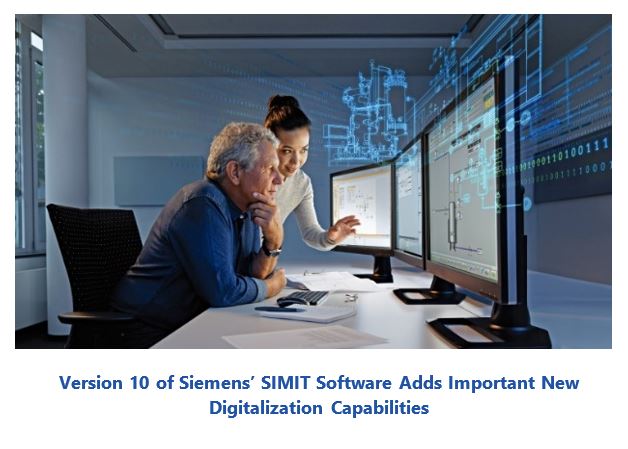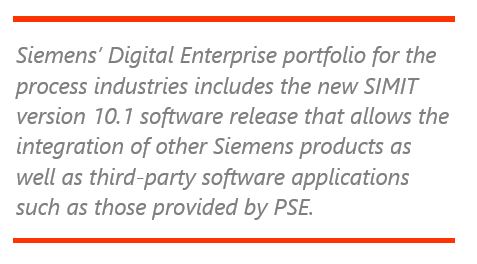

Is the digital transformation of industry real or largely hype? A recent briefing with Siemens executives provided ARC Advisory Group analysts with additional datapoints in this area on its digital transformation 
According to Dr. Mathias Oppelt, head of the Siemens simulation center for process automation, the company continues to upgrade and enhance its product portfolio to empower manufacturing companies to make progress on their respective digital transformations through a combination of product improvements and assistance from third-party process experts. Siemens recently announced version 10.1 of its SIMIT simulation platform with added benefits for both process and discrete manufacturers and announced a partnership with UK-based Process Systems Engineering Ltd (PSE) that leverages that company’s unique asset management and process optimization expertise.
Siemens’ newest SIMIT version 10.1, part of the company’s Digital Enterprise portfolio, can support virtual commissioning for a wide range of industries. In addition to machine tool and discrete part manufacturing, these include power generation, refining, chemicals, and other process industries. The new software version 
Version 10.1 of the software also enables the flexible addition of functionalities such as new libraries, the Component Type Editor, and virtual controllers. In conjunction with the new license structure, SIMIT offers improved scalability that can be tailored to any project size, according to the company. This helps make simulation affordable right from the initial stage, as the pricing structure in place from Version 10 onwards considers the size of the simulated project.
Together with the new SIMATIC Machine Simulator V1.0, these improvements create the basis for isosynchronous coupling between the virtual PLC (PLCSIM Advanced) and simulation model (SIMIT). The Siemens controllers or other third-party PLCs can operate as real-time controllers connected to simulation models in the SIMIT platform. Optional connections are available to spatial simulations and engineering data from the company’s COMOS product.
In a related announcement, ARC also learned that Siemens has a new partnership with UK-based Process Systems Enterprise Ltd (PSE) that allows the use of PSE process expertise and integration with PSE’s gPROMS Advanced Process Modelling (APM) products. These can provide a combination of high-fidelity models, powerful mathematical optimization and global system analysis capabilities, and high-performance computing (HPC) capabilities for rapid and robust solution of complex problems.
Under the agreement, the companies are bringing to market a new set of solutions for long-term equipment and health monitoring, soft-sensing, prediction of future process performance, real-time optimization, and operator training incorporating high-fidelity models. The solutions are all based on combining process models that embody deep process knowledge with real-time and historical plant data.

Future developments will see similar model-based approaches integrated over the whole lifecycle of a process plant. Siemens and PSE have demonstrated the digital process twin technology for an ethylene plant implementation using PSE’s gPROMS Olefins Operational Excellence tools. PSE suggests that applications of these types of techniques in large-scale operations such as ethylene plants has demonstrated a 2 percent improvement in yield.
The Siemens product evolution and cooperation agreements with third parties provides new options for plant owner/operators to achieve an evergreen simulation using the digital twin concept. Siemens product suite extends from PLM and other tools at the plant and process design stage, through asset performance management tools at the operations & maintenance stage of the running plant. By keeping the process, control, and spatial models up to date, an evergreen simulation can continue to provide value over the life of the plant.
Siemens digital twin technology can be applied across a wide range of manufacturing technology from machine tools and discrete part manufacturing through power generation, refining, and chemicals. The virtualization can be applied to spatial 3D geometry, dynamic control system simulation, and dynamic or steady-state simulation of the manufacturing processes. The development and use of design models throughout the life of the operating manufacturing plant can achieve evergreen simulation to help ensure this important intellectual property continues to provide value.
Siemens appears to be steadily evolving its tools for enabling a digital transformation with more interlocking pieces. It might perhaps be more accurate to refer to this as a “digital evolution,” with the most valuable software and technology species displacing older less capable versions.
ARC Advisory Group clients can view the complete report at ARC Client Portal
If you would like to buy this report or obtain information about how to become a client please Contact Us
Keywords: Operator Training Simulator (OTS), SIMIT, COMOS, SIMATIC PCS 7, Digital Twin, Digital Transformation, Siemens, ARC Advisory Group.

